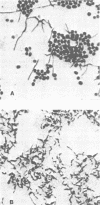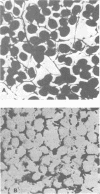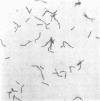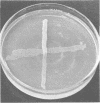Abstract
Agromyces ramosus occurs in very high numbers in most soils and, based on studies of laboratory isolates, does not require host cells for growth. Nevertheless, it attacked and destroyed most of the gram-positive and gram-negative bacterial species tested as possible host organisms. A. ramosus also attacked and destroyed Saccharomyces cerevisiae. The possibility of attack on fungi was unclear. Among the bacteria serving as hosts were the important soil species Azotobacter vinelandii, Rhizobium leguminosarum, Rhizobium meliloti, and Agrobacterium tumefaciens. Dead cells were not attacked. A. vinelandii cysts were attacked but left unharmed. To some extent, A. vinelandii seemed to survive this attack by encysting. Attack by A. ramosus occurred in natural soil and over a broad range of nutritional levels in laboratory media. The attack did not seem to be a means for obtaining an increased supply of commonly available nutrients. Instead, it seemed to be a means of obtaining something produced, perhaps in small amounts, by a variety of organisms, but not by all organisms. Several types of culture filtrates were tested for activity. The filtrates neither stimulated nor inhibited the growth of A. ramosus or the host organisms. The availability of catalase activity in host organisms did not seem to be involved. It is not known whether the attack by Agromyces ramosus in soil can be manipulated to cause a decrease in numbers of Agrobacterium tumefaciens or other pathogens without simultaneously depressing the numbers of beneficial organisms in this habitat.
Full text
PDF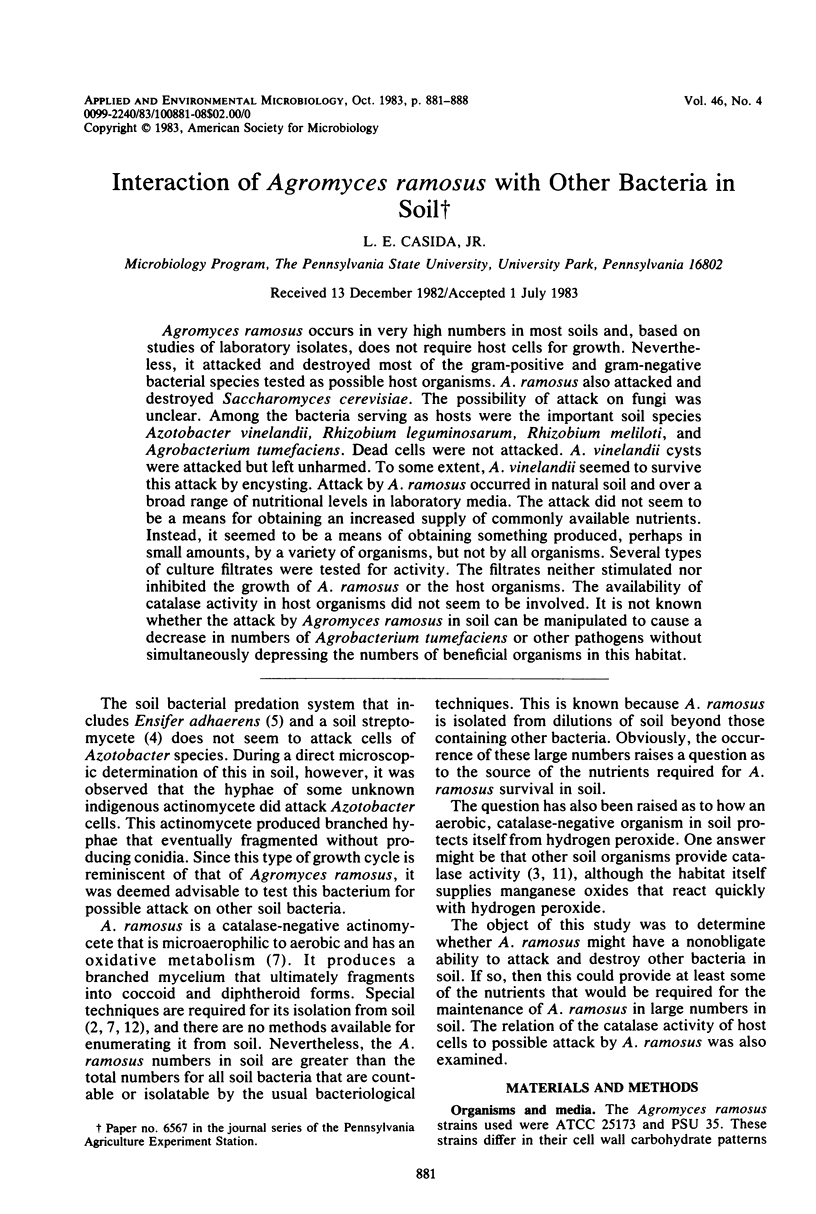
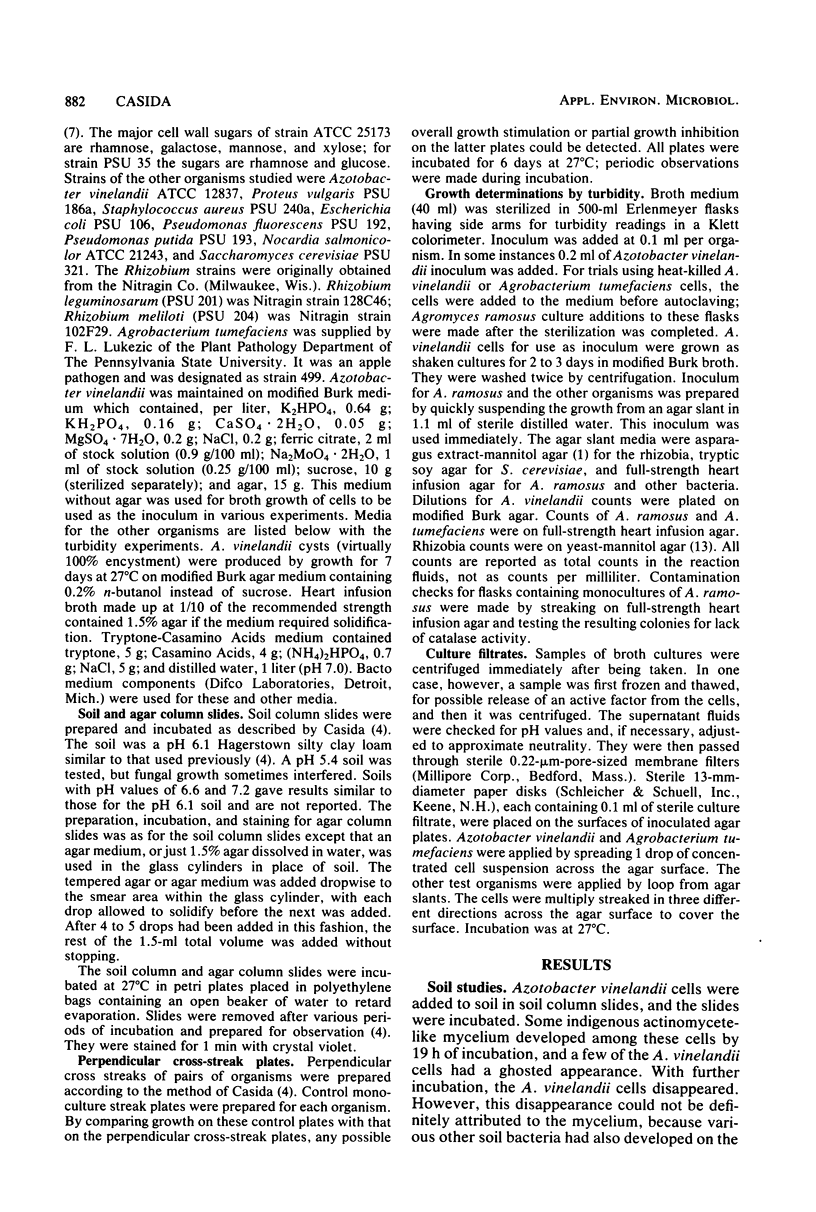
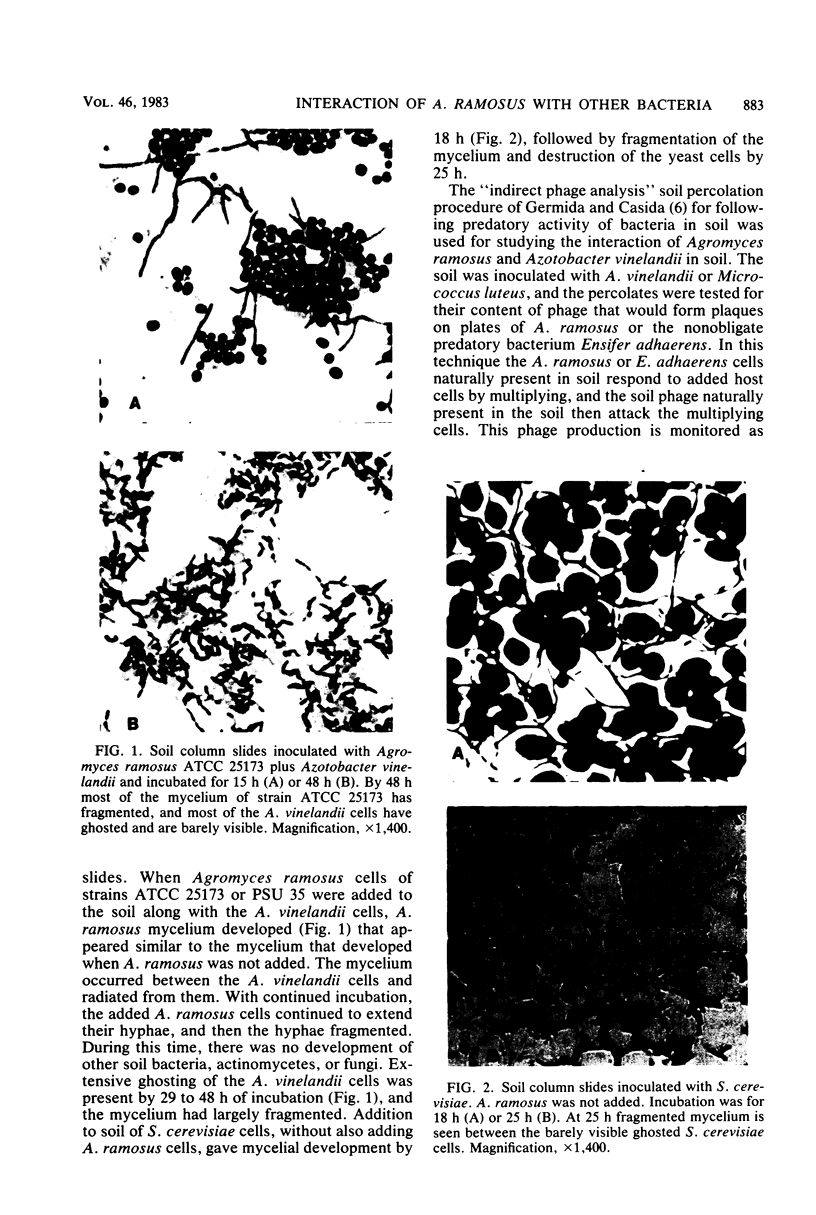
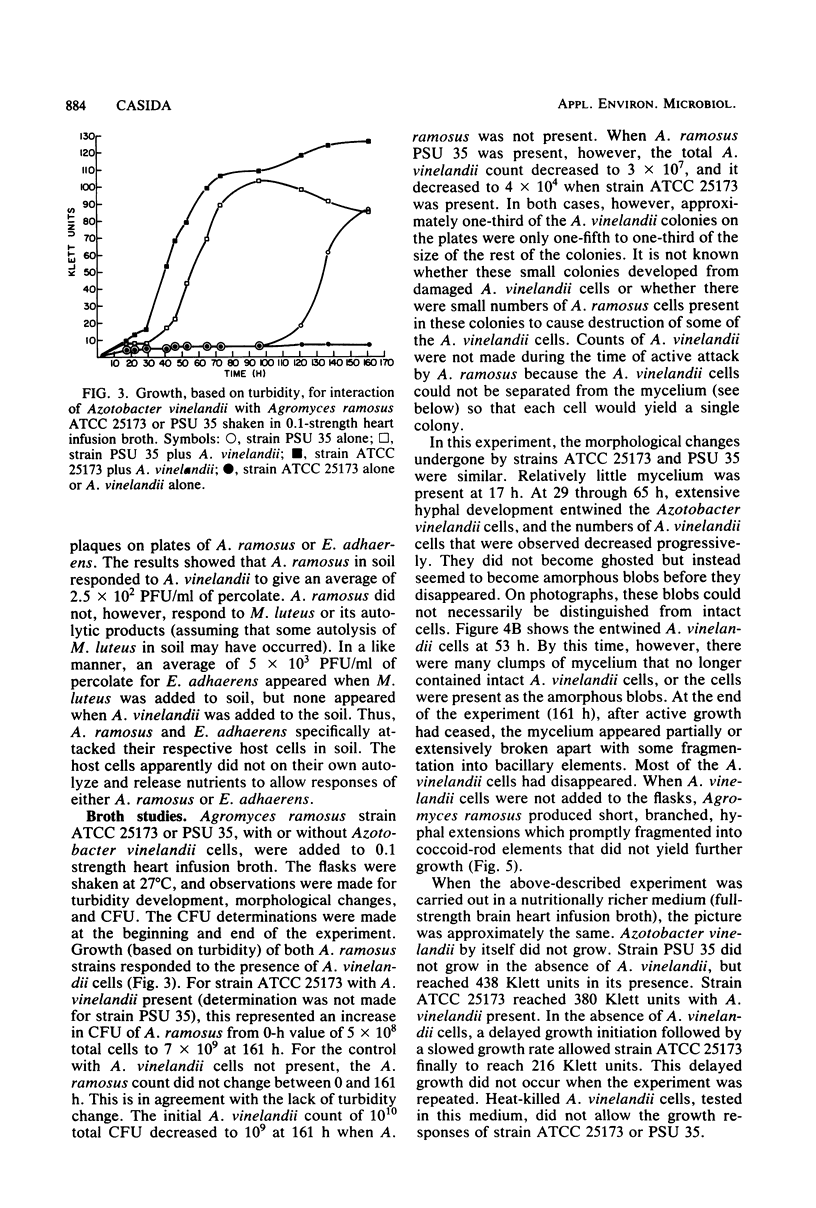
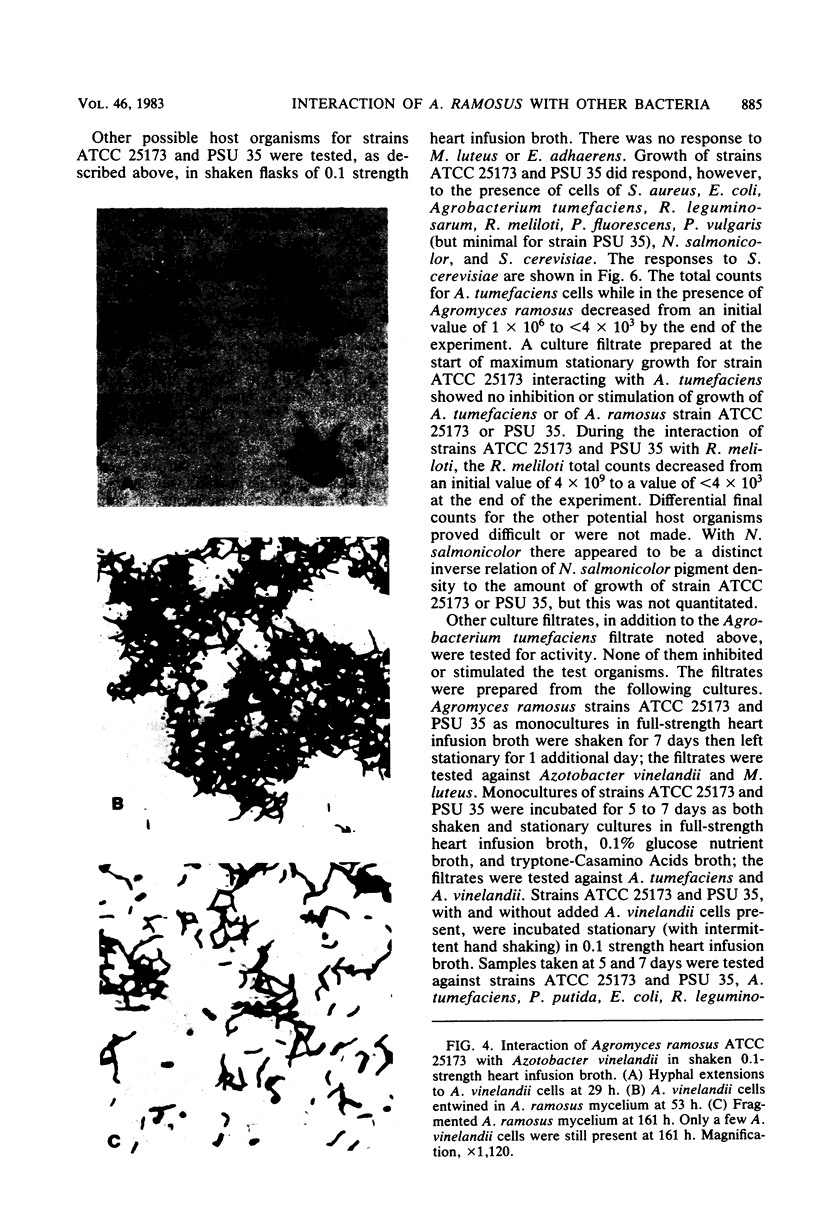
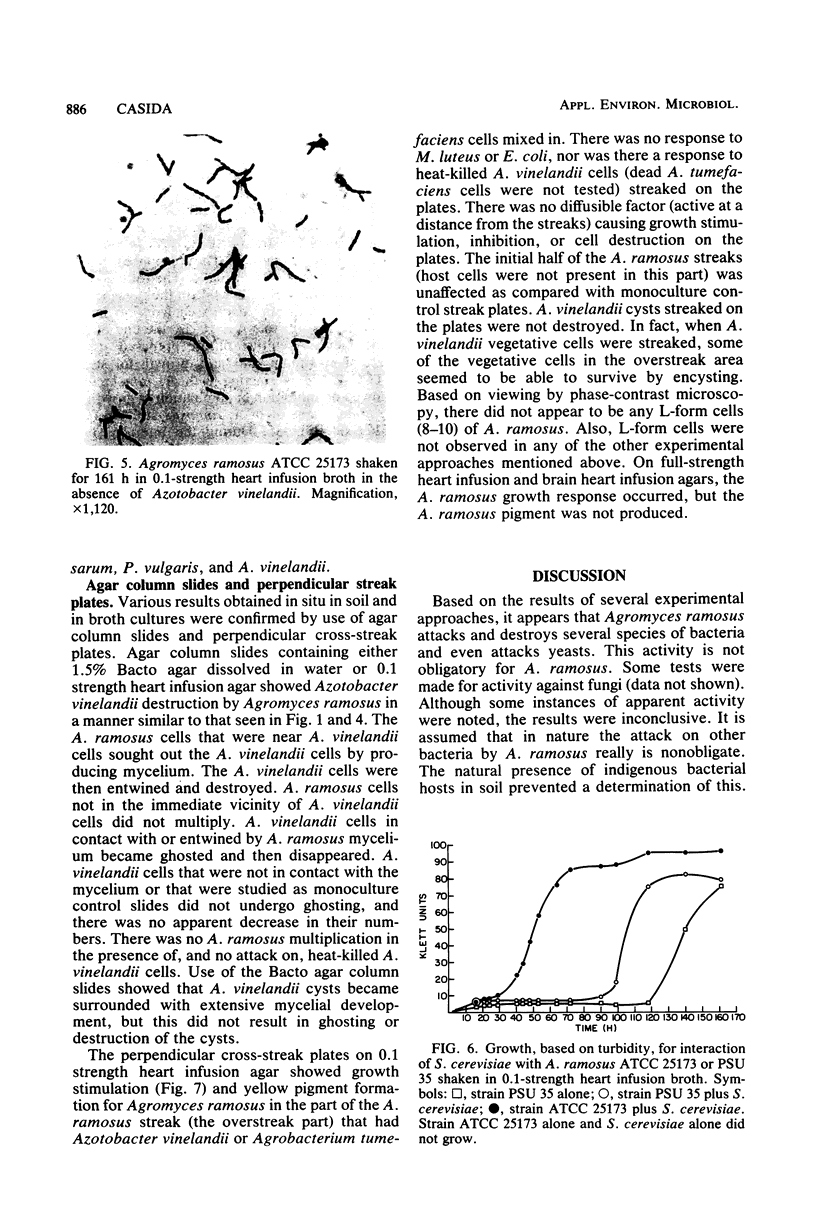
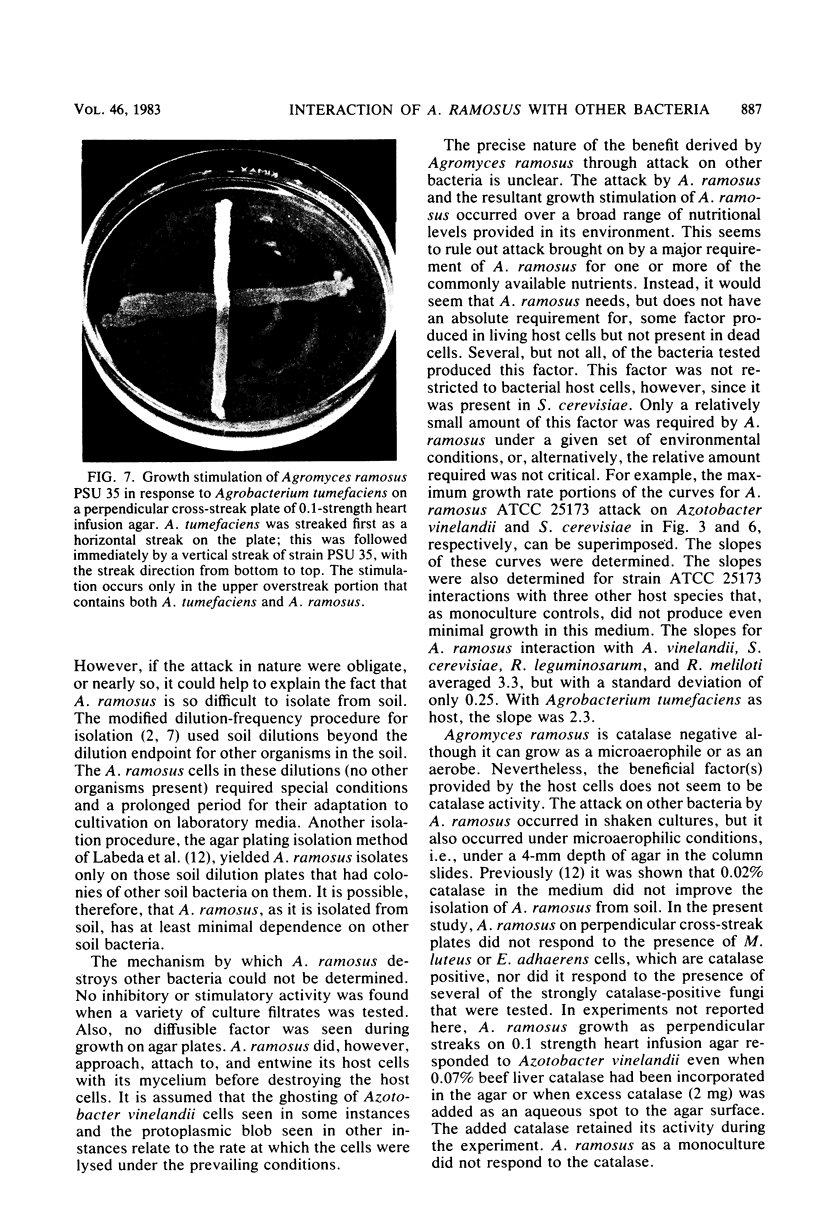
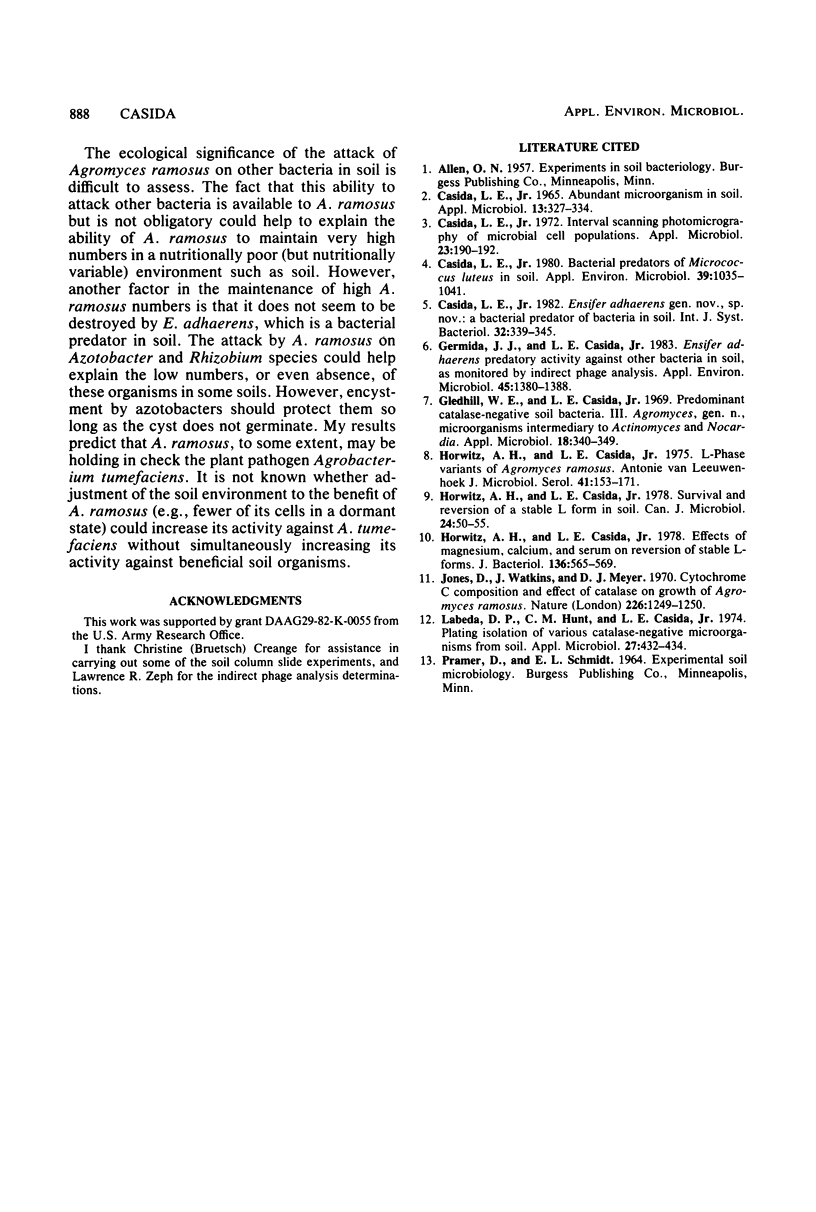
Images in this article
Selected References
These references are in PubMed. This may not be the complete list of references from this article.
- CASIDA L. E., Jr ABUNDANT MICROORGANISM IN SOIL. Appl Microbiol. 1965 May;13:327–334. doi: 10.1128/am.13.3.327-334.1965. [DOI] [PMC free article] [PubMed] [Google Scholar]
- Casida L. E. Bacterial Predators of Micrococcus luteus in Soil. Appl Environ Microbiol. 1980 May;39(5):1035–1041. doi: 10.1128/aem.39.5.1035-1041.1980. [DOI] [PMC free article] [PubMed] [Google Scholar]
- Casida L. E., Jr Interval scanning photomicrography of microbial cell populations. Appl Microbiol. 1972 Jan;23(1):190–192. doi: 10.1128/am.23.1.190-192.1972. [DOI] [PMC free article] [PubMed] [Google Scholar]
- Germida J. J., Casida L. E. Ensifer adhaerens Predatory Activity Against Other Bacteria in Soil, as Monitored by Indirect Phage Analysis. Appl Environ Microbiol. 1983 Apr;45(4):1380–1388. doi: 10.1128/aem.45.4.1380-1388.1983. [DOI] [PMC free article] [PubMed] [Google Scholar]
- Gledhill W. E., Casida L. E. Predominant Catalase-negative Soil Bacteria. III. Agromyces, gen. n., Microorganisms Intermediary to Actinomyces and Nocardia. Appl Microbiol. 1969 Sep;18(3):340–349. doi: 10.1128/am.18.3.340-349.1969. [DOI] [PMC free article] [PubMed] [Google Scholar]
- Horwitz A. H., Casida L. E., Jr Effects of magnesium, calcium, and serum on reversion of stable L-forms. J Bacteriol. 1978 Nov;136(2):565–569. doi: 10.1128/jb.136.2.565-569.1978. [DOI] [PMC free article] [PubMed] [Google Scholar]
- Horwitz A. H., Casida L. E., Jr L-Phase variants of Agromyces ramosus. Antonie Van Leeuwenhoek. 1975;41(2):153–171. doi: 10.1007/BF02565047. [DOI] [PubMed] [Google Scholar]
- Horwitz A. H., Casida L. E., Jr Survival and reversion of a stable L form in soil. Can J Microbiol. 1978 Jan;24(1):50–55. doi: 10.1139/m78-009. [DOI] [PubMed] [Google Scholar]
- Jones D., Watkins J., Meyer D. J. Cytochrome composition and effect of catalase on growth of Agromyces ramnosus. Nature. 1970 Jun 27;226(5252):1249–1250. doi: 10.1038/2261249a0. [DOI] [PubMed] [Google Scholar]
- Labeda D. P., Hunt C. M., Casida L. E., Jr Plating isolation of various catalase-negative microorganisms from soil. Appl Microbiol. 1974 Feb;27(2):432–434. doi: 10.1128/am.27.2.432-434.1974. [DOI] [PMC free article] [PubMed] [Google Scholar]



